Thailand’s heritage spans the compelling kingdoms of Sukhothai, Ayutthaya, and the Rattanakosin era. This history is intertwined with a deep Buddhist faith and a world-renowned food culture. The Thai people are a people both proud and humble at the same time.
And the Thai language, a descendant of ancient Sanskrit, is as melodic as it is complex. Their literature, filled with tales of gods and demons, heroes and villains, is a trove of folklore. In Thailand, the ancient, the spiritual and the ultra-modern all seem to co-exist in a way that rarely works elsewhere.
Thailand Heritage and the Dawn of Happiness Kingdom (1238 -1438)

The historic city of Sukhothai marks the first real chapter in the history of Siam. It’s where fearless local leader Pho Khun Bang Klang Hao defied the powerful Khmer, declaring independence and founding the fledgling kingdom.
Under the reign of King Ram Khamhaeng the Great, the Thai heritage town of Sukhothai came into its own. This visionary leader is credited with codifying the Thai language and promoting Theravada Buddhism as the dominant religion. Under his rule came a golden age of Buddhist art and literature when the kingdom’s cultural life flourished.

Sukhothai Historical Park
Sukhothai Historical Park, covering 7000 hectares, was once the administrative seat of the Sukhothai Kingdom. Exploring the park is an adventurous journey back in time to the heart of the first Thai kingdom. The historical park, near modern-day Sukhothai, is home to the ruins of the ancient city. Its most famous structure, Wat Mahathat with its breathtaking central prang, offers us a glimpse of the once-grandeur of the Sukhothai Kingdom.
Kamphaeng Phet Historical Park
On the southern border of the Sukhothai Kingdom lies Kamphaeng Phet Historical Park. This location was a 330-hectare military stronghold. It was also a major trading outpost for the kingdom.
Si Satchanalai Historical Park
While Sukothai was the seat of administrative power, Si Satchanalai, a 4500-hectare site, was the spiritual home of the kingdom. It was an important trade centre for the export of ceramics to neighbouring kingdoms. You’ll notice well-preserved temples, chedis, and city walls, all built from laterite stone. The atmosphere and worn-out temple walls allow visitors to appreciate the artistic heritage of this once-powerful kingdom.
Thailand Heritage and the Majestic Ayutthaya Kingdom (1351-1767)
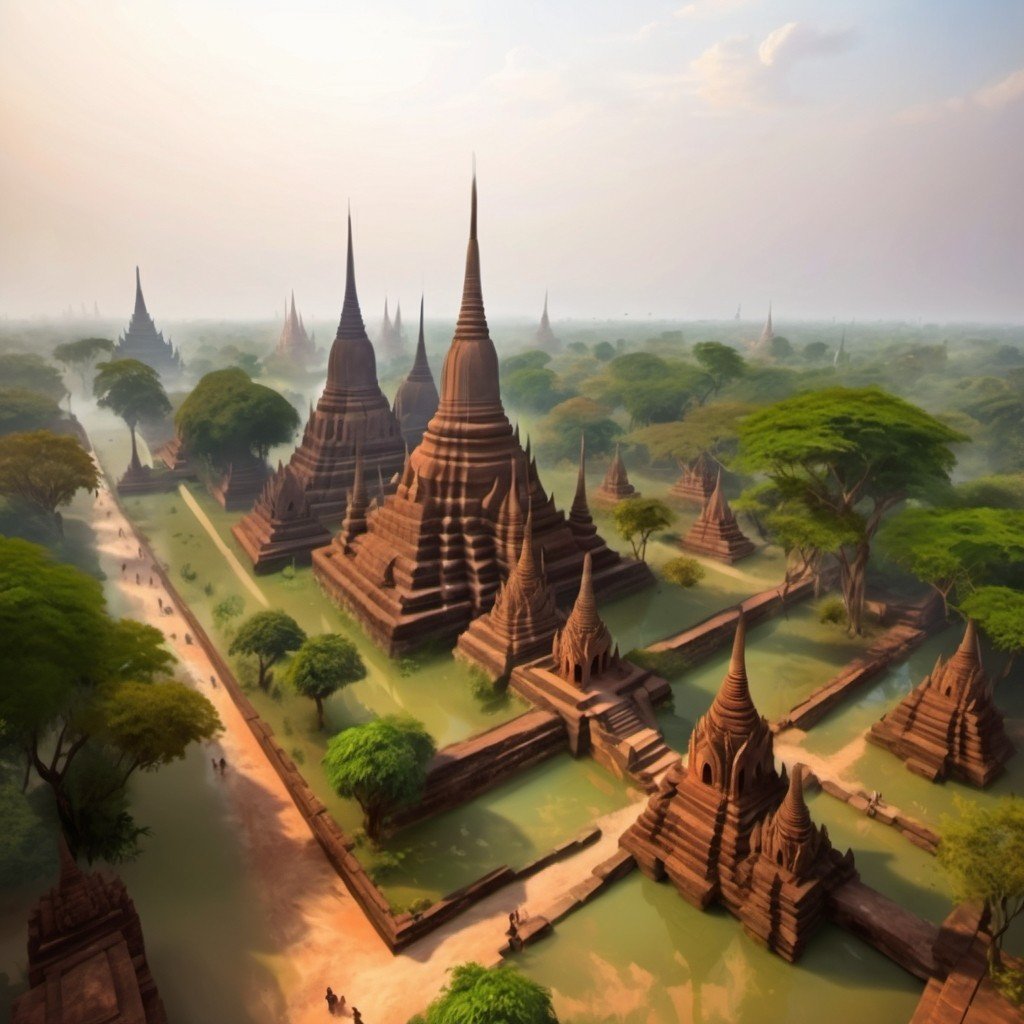
Thailand’s heritage history continues with the decline of Sukhothai and the rise of the Kingdom of Ayutthaya. The new era saw an even more prosperous age. It was a time of classic Thai craftsmanship and thriving commerce. The power and influence of Ayutthaya rivalled any kingdom within Southeast Asia.
Strategically positioned on the Chao Phraya River, it became a busy city at the crossroads of trade from China, India, and Europe. Foreigners were drawn by exotic spices. Grand palaces and magnificent temples dotted the landscape, reflecting the kingdom’s immense wealth.
It was the time of the great King Naresuan. This royal warrior freed Ayutthaya from Burmese rule. His military prowess is legendary to the Thai people. His legendary elephant battle with the crown prince of Burma is a tale for the ages.
The ancient city of Ayutthaya, now a UNESCO World Heritage Site, is a monument to a bygone age. The towering Wat Phra Si Sanphet was once adorned with solid gold chedis. Perhaps now faded and worn, but it reminds us all of the grand heritage of the kingdom that once stood tall on the world stage.
Wat Yai Chaimongkol, with its impressive chedi, is another highlight of any Ayutthaya visit. Walking among the ruins of the Thailand UNESCO site, Ayutthaya, you can’t help but be amazed.
Ayutthaya Historical Park

Wat Phra Ram
Amidst the ruins of the ancient Ayutthaya, this restored temple was once the grandest temple in the empire. It holds a special place in Ayutthaya’s history. It was erected on the cremation site of the kingdom’s founder, a tribute to a monarch who laid the foundations of this great empire.
Wat Chaiwatthanaram
On the banks of the Chao Phraya River lies Wat Chaiwatthanaram. It was commissioned by King Prasat Thong in 1630 as a tribute to his mother. The temple was designed to rival that of Angkor Wat itself. A sprawling complex of towering spires and carvings, it evokes the mysticism of ancient Khmer architecture.
As the sun dips below the horizon, the Ayutthaya Historical Park is bathed in a golden glow. The light and shadow turn these spooky ruins into a magical scene, and one you should not miss.
Thailand Heritage in the Bangkok Kingdom Era
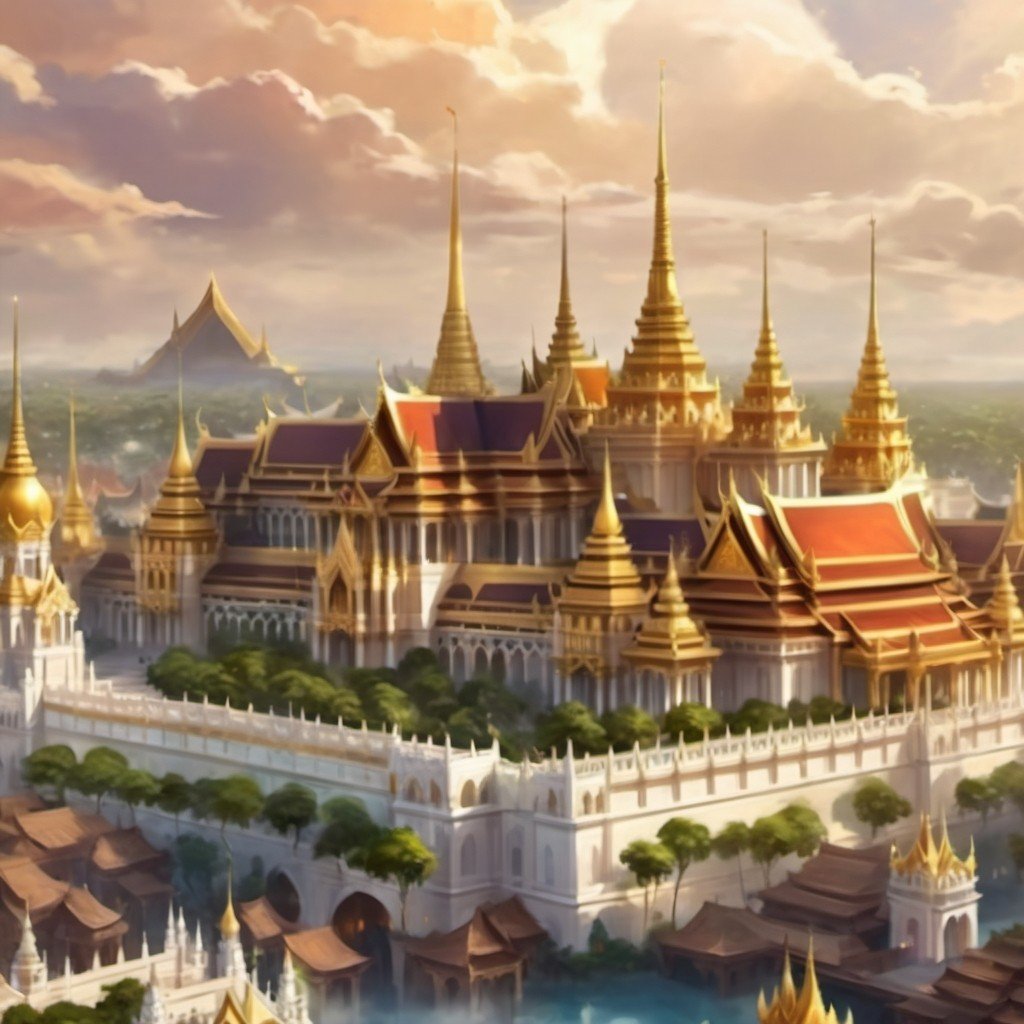
After 400 years of rule, the once-powerful kingdom fell to the invading Burmese. The invaders burned down the city of Ayutthaya in 1767. But the Thais weren’t about to let the invading upstarts have the last laugh. Under the leadership of military leader Taksin, they triumphed over the invaders in a mere year. Taksin then set up a new palace and capital in Thonburi, part of what is now Bangkok. This brilliant leader was crowned king, and history would forever remember him as Taksin the Great.
But the new Thai king wasn’t quite done. Uniting breakaway provinces wasn’t easy. Smaller kingdoms thought they were better off on their own. But not on Taksin’s watch! He swiftly replaced disloyal leaders with ones he could trust, reuniting the kingdom.
Rattanakosin Era
Around this time, Chinese migrants started trickling in as migrant labour for the fast-developing country. The Taksin’s reign, though, was cut short. All that nation-building had taken its toll. A new pretender, called Rama, seized power, becoming King Rama I and founding the Chakri dynasty, which is still the ruling dynasty today.
The royal court moved from Thonburi to the more strategic east bank of the Chao Phraya River, on Rattanakosin Island. This new dynasty brought with it a fine new palace, one that showed Thai workmanship at its best. Within its walls, the Emerald Buddha sat; a large semi-precious stone Buddha, it’s the ultimate symbol of Thai pride.
The Grand Palace

The Grand Palace, a labyrinth of spires and ornate halls, reveals the opulence of the Rattanakosin Kingdom. The palace is a city within a city. From the Temple of the Emerald Buddha to the auspicious Phra Si Rattana Chedi, every corner of the palace is a delight for any serious heritage lover. The attention to minute details, the use of colours, and the sheer majesty of the place are breathtaking.
Wat Pho
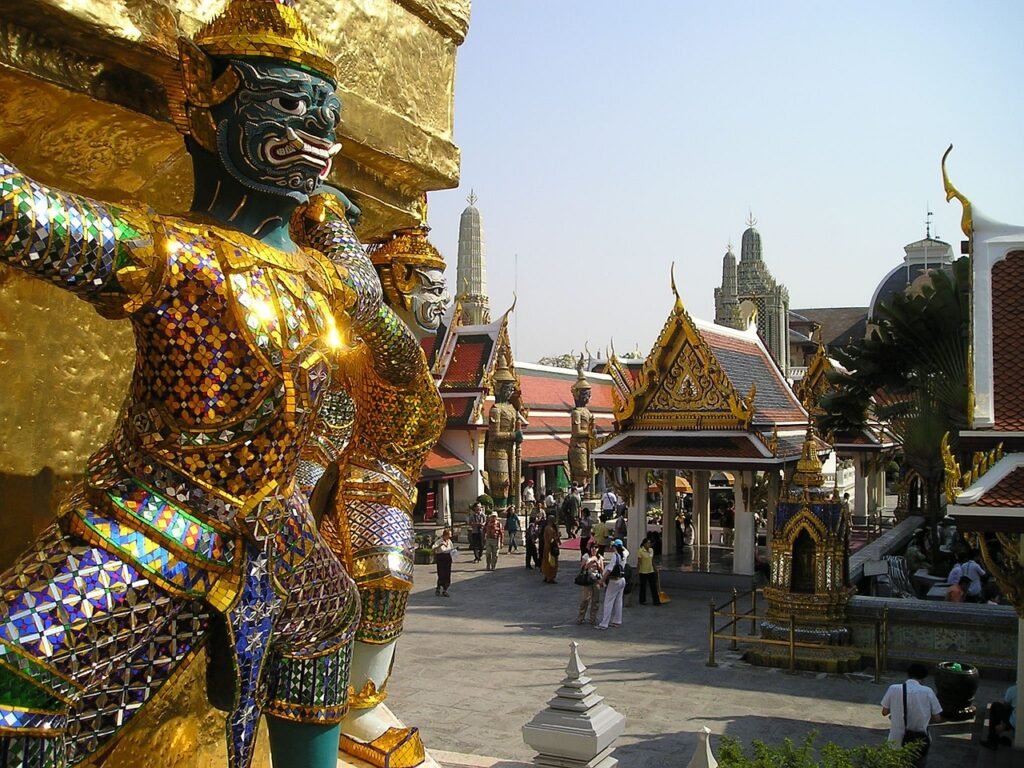
Wat Pho houses the colossal Reclining Buddha. But Wat Pho is also a famous centre of learning and healing. The temple is considered the birthplace of traditional Thai massage. Visitors can still experience this ancient practice today. As you wander about, you’ll encounter collections of Buddha images, each one more intricate and beautiful than the last. It’s a must-visit for anyone seeking a deeper understanding of Thai culture and spirituality.
Wat Arun
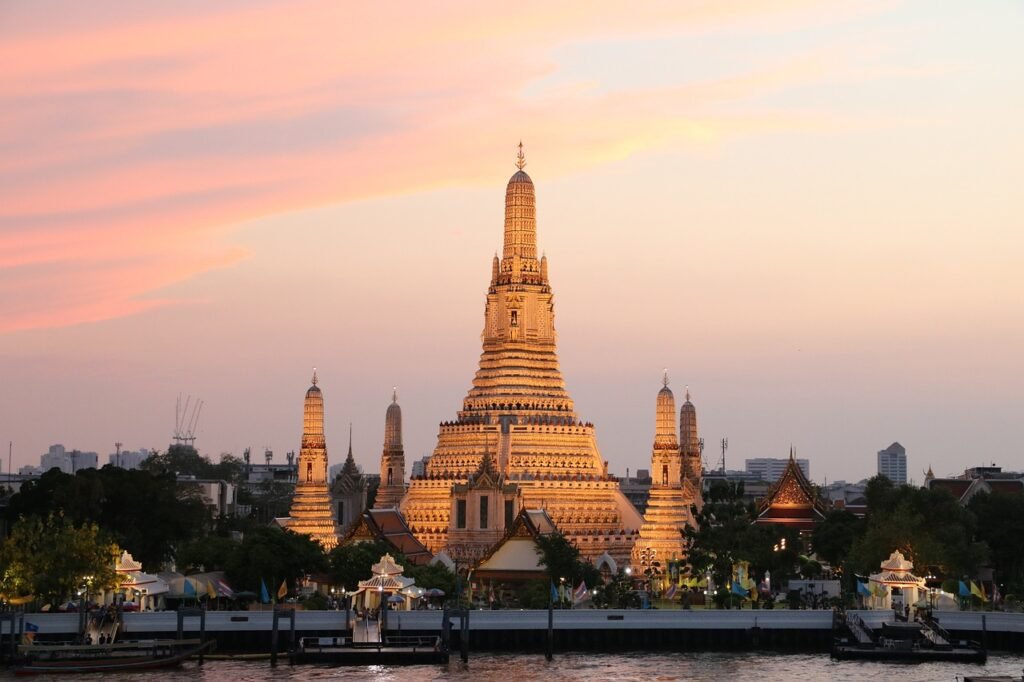
Known as “the Temple of Dawn” because it faces east towards the rising sun, Wat Arun is one of Bangkok’s most famous landmarks. The towering prang symbolises Mount Meru from Hindu cosmology. The smaller prangs represent the mountains surrounding it. The temple is a sight to behold. Come sunrise, the first rays of the sun illuminate the temple. It’s a peaceful scene, seemingly a world away from the hectic megacity of downtown Bangkok.
Northern Thailand Heritage and Lanna Kingdom

“Have you been to Chiang Mai yet?” It’s a question asked many times by the Thais. And if you haven’t, you’re missing out!
Chiang Mai, Thailand’s second-largest city, is tucked away high in the mountain ranges of Northern Thailand. With a cooler climate, natural beauty, and a laid-back atmosphere, it’s no wonder both Thais and foreigners love it so.
The city is a haven for artists, craftspeople, and digital nomads from around the globe. Here, ancient Lanna temples rub shoulders with trendy cafes.
The Lanna Kingdom began its story in the 13th century with King Mengrai. In 1296, he settled on Chiang Mai as his newest stronghold due to its strategic location on the banks of the Ping River.
Lanna Becomes an Economic Powerhouse
Lanna soon became a cultural and economic powerhouse. Located at the crossroads of important trade routes, it was perfect for trading goods from China, India, and other Southeast Asian kingdoms.
The 14th and 15th centuries marked the peak of Lanna’s influence. The kingdom’s rulers oversaw a period of peace and prosperity. Buddhism thrived, and the arts flourished. The building of temples, such as Wat Phra That Doi Suthep and Wat Chedi Luang, came to reflect the deep spiritual faith of the Lanna people.
But next door, the Burmese medieval kingdom posed threats and weakened the Lanna Kingdom. By the 16th century, the Burmese had conquered Chiang Mai. Despite centuries of foreign occupation, Lanna’s cultural legacy continued. The Lanna style of art, including carvings, temple decorations, and painted murals, continued. And Chiang Mai to this day retains a thriving art scene.
Wat Doi Suthep
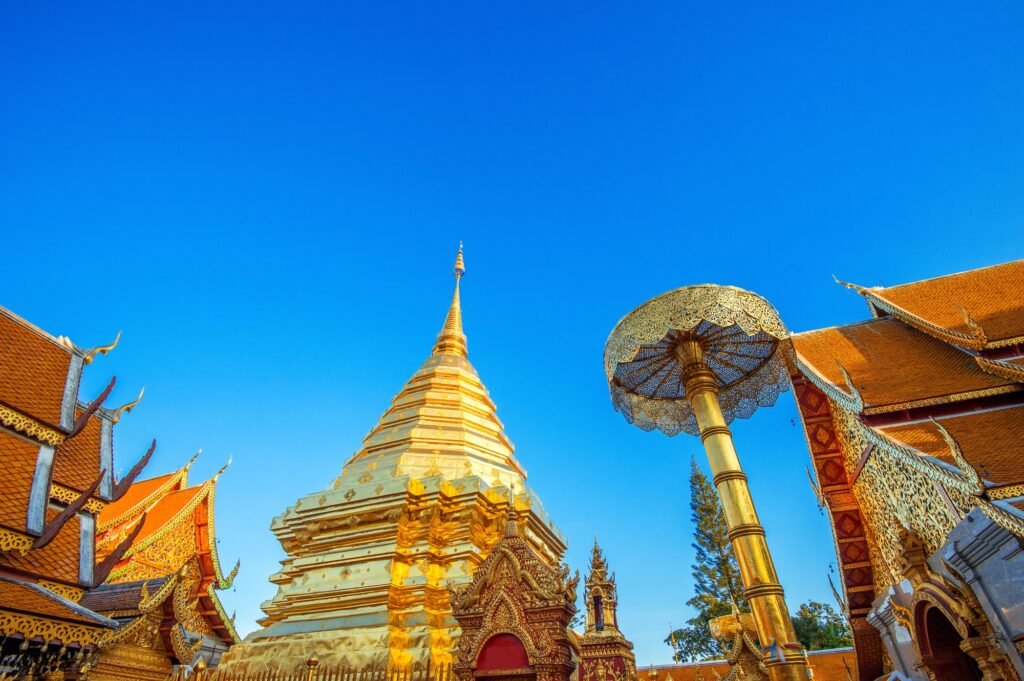
Wat Doi Suthep on Doi Suthep Mountain is one of Chiang Mai’s most iconic spots. To reach this site, you’ll need to climb a flight of steps, but the reward is worth it. On top, you’ll be greeted by stunning views of Chiang Mai below and surrounding mountain ranges on the horizon. The temple is a masterpiece of Lanna architecture, with its golden chedi gleaming in the sunlight. Inside, you’ll hear the soft murmur of prayers and the clinking of prayer bells. It’s a place of spiritual renewal, and the surrounding natural beauty makes it a perfect place to while away an afternoon.
Wat Chedi Luang
Wat Chedi Luang, located in the heart of the old city, was a once-mighty temple. Its towering chedi stands as a reminder of the city’s vulnerability. Its upper portion was destroyed by a long-ago earthquake in 1545. However, there are newer places of worship that bring this site into the modern age. It’s still very much a temple at the heart of Chiang Mai life.
Sunday Walking Street
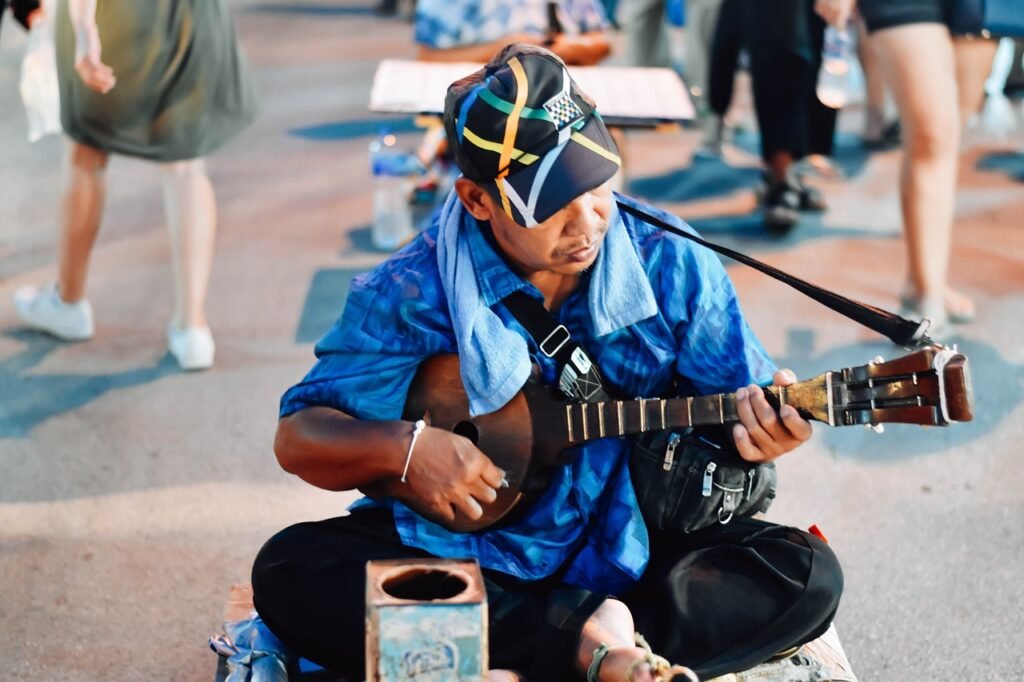
Every Sunday, the old city hosts street vendors, live performers, artisans and much more, as the curious at heart attend this famous walking street. Everywhere you turn, you’ll encounter a spellbinding choice of goods. Ornate silver jewellery to colourful silk scarves and everything in between. And to top this all off, the air is filled with the aroma of the best street food Chiang Mai has to offer.
Thailand Heritage – The Origins of Thai Cuisine
Thai food isn’t just delicious; it’s a heady mix of flavours and traditions. Traditions that are shaped by centuries of history.
Ancient Roots and Foreign Influences
The first recorded Thai food dishes were soups and broths. Soups like Tom Khlong and Tom Yam Gung. The ingredients of these soups were readily available along the Chao Phraya River.
The influence of Chinese, Indian, and Burmese truly spiced things up. The Chinese brought noodles, the Indians came with curries and spices. The Burmese shared their fermented fish sauces and hot chillies.
Today, Thai cuisine is as diverse as the country itself. Each region has its distinct flavours. In the north, you’ll find Burmese-style curries. Central Thailand is known for its elegant dishes and the use of coconut milk. The northeast region is famed for its spicy salads, while Southern Thailand borrows heavily from neighbouring Malay cuisine.
Thai cuisine is a blend of sweet, sour, salty, and bitter tastes. At meal times, Thai rice is accompanied by stir-fried dishes, crispy and crunchy accompaniments, curries, fish fried or steamed, soups, spicy salads and spicy Nam Prik (chilli dip sauces).
Why the World Loves Thai Cuisine
What’s the secret to Thai food’s global domination? Is it the colours jumping at you? Or the food aromas filling the air? Or perhaps it’s the balance of flavours dancing on your taste buds?
Whatever your answer, this cuisine has the most colourful presentations of food anywhere in the world. At its core, Thai food is more than just sustenance for the Thai people; it’s a chance to connect. And for the visitor to Thailand, to eat like the Thais is the ultimate way to experience the warm hospitality of the locals.
Thailand Heritage Guide – Why You Should Visit?

Thailand is a country of temples, some of the most exciting festivals in Asia, and warm, welcoming people. You can choose to lose yourself in the nightlife scene, shop till you drop, or visit world-class family spots in Bangkok. Or relax on one of the many beaches and island paradises of Southern Thailand.
Alternatively, you can visit UNESCO World Heritage sites like the ancient kingdom of Ayutthaya and Sukhothai. However, there are other, less-known but equally charming places for the discerning traveller.
Park Phu Phrabat Historical Park
Located in the heart of Udon Thani province, this park is a natural heritage wonderland. This UNESCO World Heritage site has unique rock formations, prehistoric rock paintings and carvings. The park’s silent atmosphere offers visitors a glimpse of Thailand rarely seen by the tourist hordes.
Ban Chiang Archaeological Site
Ban Chiang Archaeological Site is hidden in Thailand’s northeastern region. This UNESCO World Heritage Site boasts one of Southeast Asia’s most significant prehistoric settlements. Unearthed artifacts, including pottery with intricate designs along with bronzework, have made experts reassess their thesis on prehistory in the region. The site’s well-preserved remains make it a must-see destination for those wanting something more than the usual Thailand experience.
Khao Yai National Park

Thailand’s first national park is a lush wonderland. This UNESCO World Heritage Site has diverse ecosystems, from towering rainforests to sprawling grasslands. Home to elephants, gibbons, and countless bird species, the park is your chance to seek out thrilling wildlife encounters. If you’re thing is hiking through ancient forests, cascading waterfalls, or appreciating stunning vistas, Khao Yai won’t disappoint you.
Loy Krathong Festival
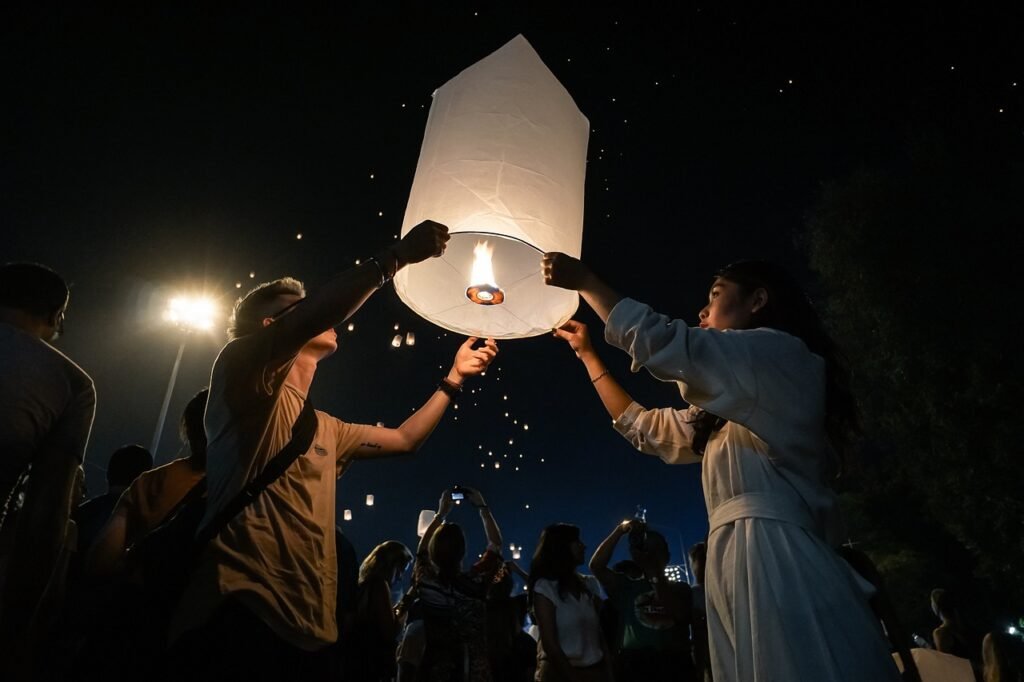
Each year, this country is seized by a peculiar kind of magic. Known as Loy Krathong, it’s a festival that’s as ancient as it is beautiful. The idea is simple enough: make a little raft out of banana leaves and decorate it with flowers, candles, and incense. Then, set it afloat on the water as an offering to the goddess of water. It’s a symbolic gesture, a way of letting go of the past and welcoming the future.
But, of course, the Thais, being the ingenious people they are, have turned this simple ritual into a full-blown extravaganza. There are beauty pageants, parades, and fireworks displays. And, in some parts of the country, people release sky lanterns, turning the night sky into a breathtaking celestial show.
Songkran Thai New Year Festival
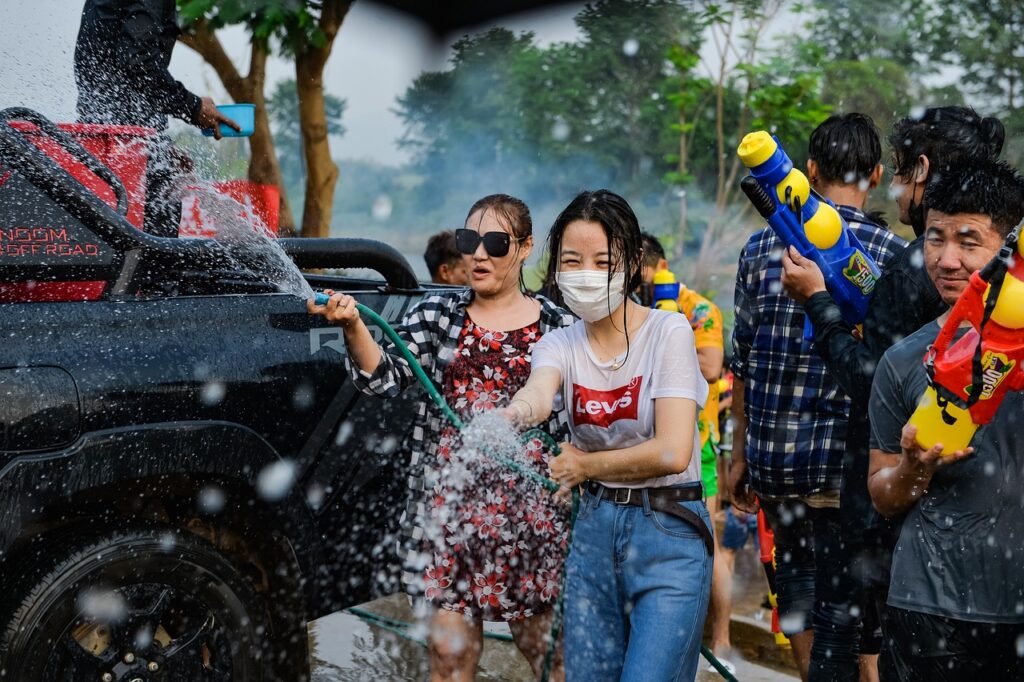
Songkran, the Thai New Year, is a water festival like no other. Love it or loathe it – you’ll most definitely have an opinion about it. It’s a time when the country goes bonkers, and everyone, from the youngest to the oldest, is fair game for a drenching of water.
The Songkran festival, taking place in mid-April, is a celebration of the traditional Thai New Year. But it’s also a way to welcome the rainy season. And what better way to do that than with a good old-fashioned water fight?
You’ll see people armed with water guns, buckets, and hoses, spraying water at anyone and everyone. It’s a chaotic, wet, and wildly fun experience. And amidst all the chaos, there’s a sense of community and camaraderie. People celebrate, laugh, and get soaked together.
But behind the scenes of mayhem, there’s a more serious side to the festivities. For the locals, it’s a time to reconnect with family, make merit at the temple and wash away bad luck.
Thailand Heritage Hospitality

Thailand is a beautiful country in so many ways. It’s one that’s all but guaranteed to touch the heart of any serious heritage traveller. Explore the ruins of old kingdoms. Wander through the largest markets in Asia. Sample the tasty food. Chill on one of the many beautiful beaches – or simply relax in the northern hills of Thailand.
But its appeal goes beyond its history, its beauty, or its entertainment. Thai people are known for their warm and welcoming nature. They’ll greet you with a heartfelt “Sawasdee” and a smile. And as far as being fun goes, the Thais are among the most “sanuk ” people you could meet. So, if you’re seeking an unforgettable heritage adventure, it’s the perfect place to put on your next heritage destination itinerary.
Thai Heritage and History FAQs
What were the major ancient kingdoms of Thailand?
Thailand’s heritage is defined by its powerful ancient kingdoms. The Sukhothai Kingdom (13th-15th centuries) is known as the “Dawn of Happiness” and is considered the first Thai capital. It was succeeded by the Ayutthaya Kingdom (14th-18th centuries), a major trading hub and military power. The Rattanakosin Kingdom (late 18th century to present) followed the fall of Ayutthaya, with its capital in modern-day Bangkok, and is the foundation of modern Thailand.
What role has Buddhism played in Thai heritage?
Buddhism is the cornerstone of Thai heritage and culture. The faith is deeply integrated into daily life, art, and architecture. Countless stunning temples, such as Wat Phra That Doi Suthep and Wat Chedi Luang in the former Lanna Kingdom, were built to house sacred relics and serve as centres of worship, reflecting the profound influence of Buddhist faith on the nation.
What are Thailand’s UNESCO World Heritage Sites?
Thailand is home to eight UNESCO World Heritage Sites that preserve its cultural and natural heritage. The five cultural sites include the historical parks of Sukhothai, Ayutthaya, Ban Chiang Archaeological Site, Si Thep Ancient Town, and Phu Phrabat Historical Park. The three natural sites are the Kaeng Krachan, Dong Phayayen-Khao Yai, and Thungyai–Huai Kha Khaeng forest complexes.
How is Thai cuisine a part of the country’s heritage?
Thai cuisine is a form of food heritage that tells the story of Thailand’s history and geography. It is divided into four distinct regional cuisines (Central, North, Northeast, and South), each with unique flavours influenced by neighbouring countries and local ingredients. From the elegance of Royal Thai cuisine to the vibrant chaos of Thai street food, Thailand’s culinary traditions reflect a rich history of trade, migration, and cultural fusion.
How is Thailand’s heritage preserved and celebrated today?
Today, Thailand’s heritage is preserved through dedicated conservation efforts led by the Fine Arts Department and various cultural institutions. It is celebrated through a variety of traditional festivals, such as Songkran and Loy Krathong, as well as through museums, historical parks, and a thriving arts and crafts scene. Additionally, UNESCO has recognised many of Thailand’s living traditions, such as Nuad Thai (Thai massage) and the dance-drama Khon, as intangible cultural heritage.

